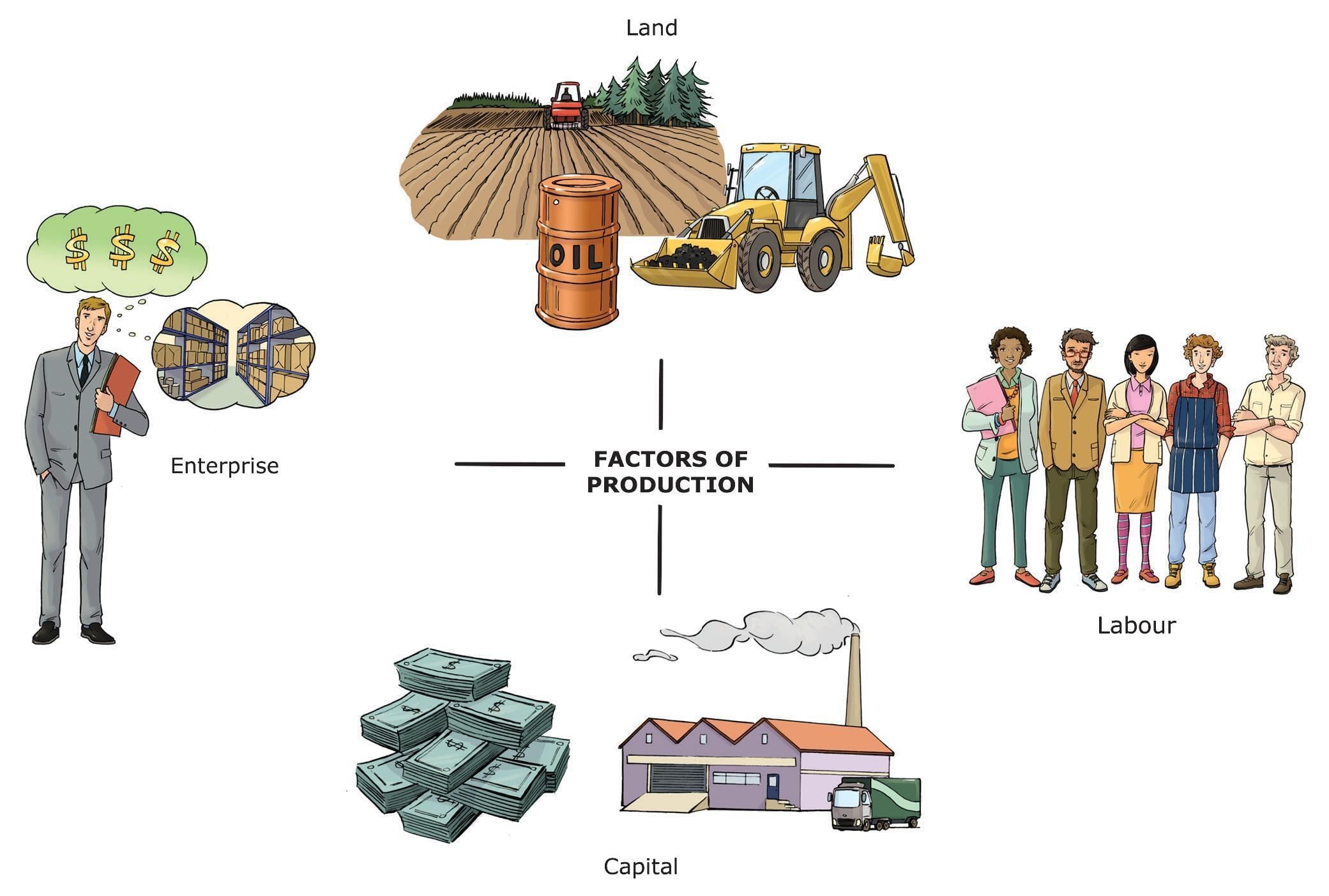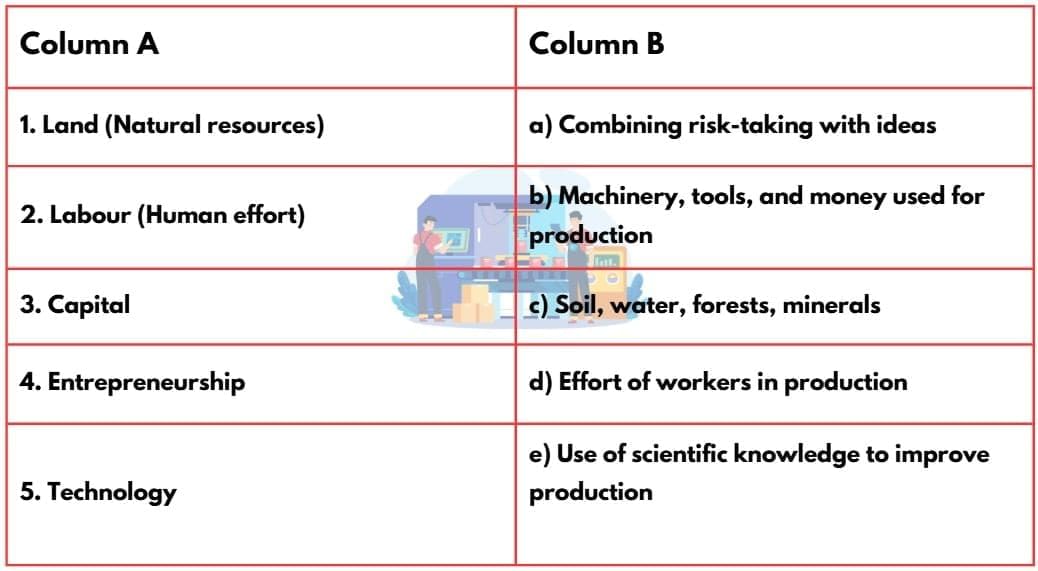Worksheet: Factors of Production | Worksheets with Solutions for Class 8 PDF Download
| Table of contents |

|
| Multiple Choice Questions (MCQs) |

|
| Match the Following |

|
| True or False |

|
| Fill in the Blanks |

|
| Very Short Answer Questions |

|
Multiple Choice Questions (MCQs)
Q1. Which of the following is an example of a natural resource used in production?
(a) Computer software
(b) Minerals and forests
(c) Workers’ skills
(d) Bank loans
Q2. In a production process, the physical and mental effort applied by humans is called—
(a) Capital
(b) Technology
(c) Labour
(d) Land
Q3. Human capital refers to—
(a) Money invested in business
(b) Machines and tools
(c) Land and natural resources
(d) The quality, skills, and knowledge of workers
Q4. Which of the following best illustrates entrepreneurship?
(a) A farmer planting crops
(b) A person starting a food delivery startup
(c) A teacher giving online classes
(d) A factory worker assembling phones
Q5. Which two main facilitators help improve human capital?
(a) Education and healthcare
(b) Technology and land
(c) Loans and machinery
(d) Minerals and forests
Q6. Capital in economics includes—
(a) Only money
(b) Only land
(c) Machines, tools, buildings, and money
(d) Only labour
Q7. Who among the following started India’s first airline in 1932?
(a) Ratan Tata
(b) Dhirubhai Ambani
(c) J.R.D. Tata
(d) Verghese Kurien
Q8. Which technological innovation helps farmers improve crop health today?
(a) Email communication
(b) Drones spraying fertilisers
(c) Pulley systems
(d) Sewing machines
Q9. The Japanese concept of continuous improvement is called—
(a) Kaizen
(b) Demographic dividend
(c) CSR
(d) SWAYAM
Q10. What is the main goal of Corporate Social Responsibility (CSR)?
(a) Increase profits only
(b) Avoid taxes
(c) Pay workers less
(d) Benefit society and the environment
Match the Following

True or False
Q1. Technology is only about machines; it cannot include software.
Q2. Workers’ training and education improve productivity.
Q3. Ancient Indians used stitching techniques to build ships.
Q4. Entrepreneurs create job opportunities for society.
Q5. Supply chain disruption can halt production.
Q6. CSR ignores environmental protection and worker welfare.
Fill in the Blanks
Q1. The four main factors of production are land, labour, capital, and ______.
Q2. Skills, knowledge, and expertise that improve labour’s efficiency are called ______ capital.
Q3. Businesses must adopt ______ practices to protect natural resources.
Q4. J.R.D. Tata founded ______ Airlines in 1932.
Q5. The network of individuals, organisations, and resources involved in producing goods is called the ______.
Q6. Money borrowed from a bank must be repaid with ______.
Q7. Online platforms like ______ provide access to online learning opportunities.
Very Short Answer Questions
Q1. Define the term “production process”.
Q2. Give two examples of technology used in modern production.
Q3. What is human capital, and how is it different from labour?
Q4. Name two responsibilities of businesses towards their employees.
Q5. Give an example of entrepreneurship in your local area.
Q6. Why is education important for building human capital?
Q7. Explain the concept of demographic dividend.
Q8. Mention one ancient Indian skill or technique used in production.
Q9. What is the purpose of supply chain management in production?
Q10. Why should factors of production be used responsibly?
You can find Worksheet Solutions here: Worksheet Solutions: Factors of Production
FAQs on Worksheet: Factors of Production - Worksheets with Solutions for Class 8
| 1. What are the four main factors of production? |  |
| 2. How do factors of production impact the economy? |  |
| 3. Can you explain the role of entrepreneurship in the factors of production? |  |
| 4. What is the difference between capital and labor as factors of production? |  |
| 5. How does the availability of natural resources affect the factors of production? |  |




















